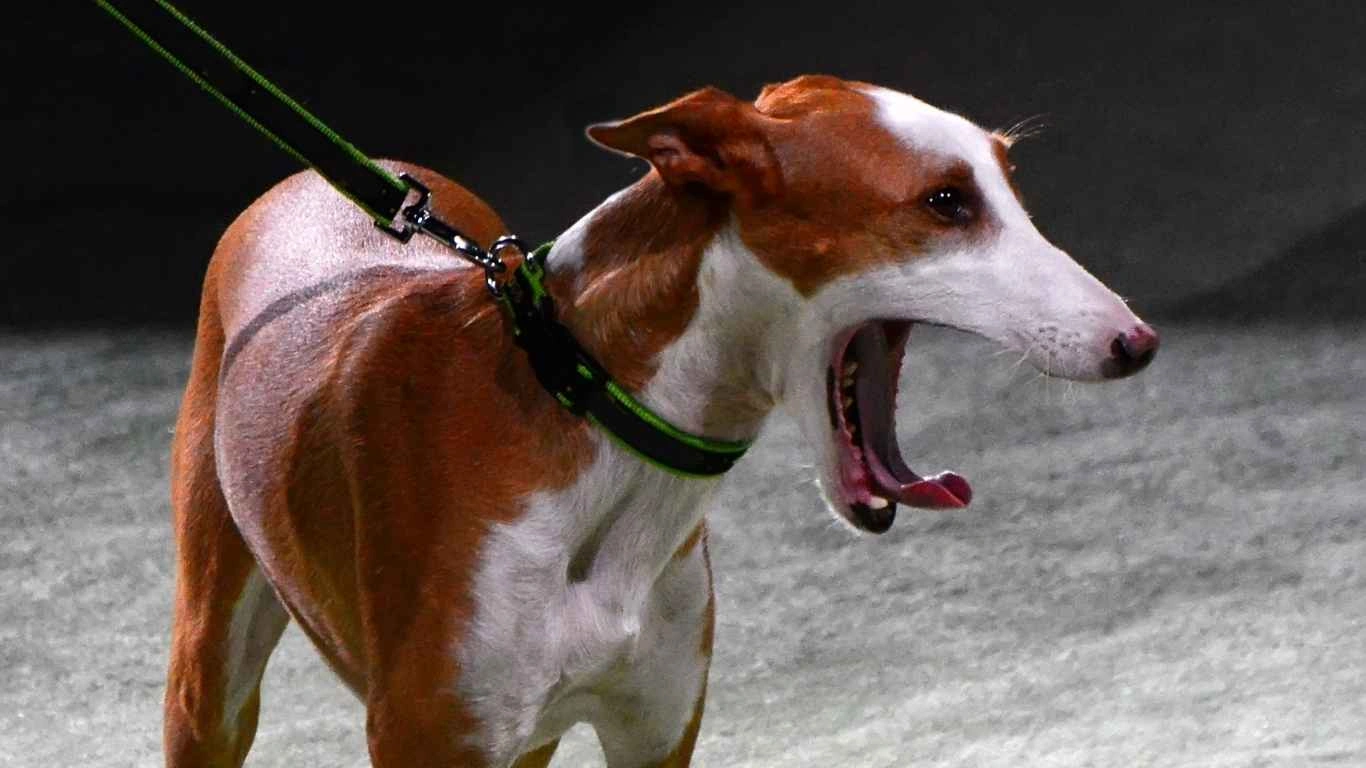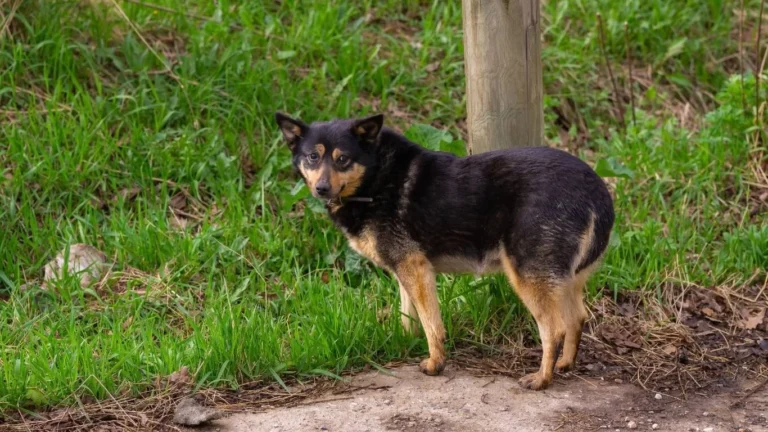How to Create a Balanced Pescatarian Diet for Dogs – A Healthy Guide
As an Animal Care Specialist, I’ve worked closely with countless pet owners to ensure their dogs lead healthy, happy lives. One of the most interesting trends I’ve come across in recent years is the rise of the pescatarian diet for dogs. It might sound unusual at first—after all, we tend to think of our furry friends as carnivores—but more pet owners are starting to consider plant-based meals with fish as a key protein source. So, if you’re wondering how to create a balanced pescatarian diet for dogs, you’re not alone. It’s a unique choice that combines the health benefits of fish and plant-based ingredients, and it can provide your dog with a variety of nutrients essential for overall well-being. But how exactly can you build a healthy pescatarian diet for your dog, and what are the things you need to know to make sure you’re doing it right? Let’s dive in!
What Is a Pescatarian Diet for Dogs?

A pescatarian diet for dogs, much like the human version, includes fish as the primary source of protein while avoiding other animal meats like beef, chicken, or pork. But it’s not just about the fish. The diet also emphasizes plant-based ingredients like vegetables, fruits, and grains. This mix of seafood and plant-based food can offer your dog a variety of health benefits, including improved coat quality, better digestion, and a reduced risk of certain health issues.
In my experience, this diet can work particularly well for dogs with food sensitivities or allergies to common animal proteins. Fish is generally easier to digest for many dogs and is rich in omega-3 fatty acids, which can contribute to healthy skin, joints, and cognitive function.
Why Choose a Pescatarian Diet for Your Dog?
So why would you choose a pescatarian diet for your dog over a traditional meat-based one? It comes down to several health benefits. First, fish is a great source of lean protein, and when you combine it with the right plant-based ingredients, you can create a well-rounded, nutrient-dense meal for your pet.
Another reason I’ve seen pet owners lean toward this diet is because of its anti-inflammatory properties. Omega-3 fatty acids found in fish are known to help reduce inflammation, which is particularly beneficial for older dogs or those suffering from joint issues. Plus, for those concerned about sustainability, fish is often considered a more eco-friendly option than raising livestock.
Additionally, some dogs just do better on a pescatarian diet. Certain breeds or individual dogs may struggle with digesting red meat or poultry, making fish a gentler alternative. This diet is also naturally lower in fat compared to other meats, which can be beneficial for dogs who are overweight or prone to obesity.
Essential Nutrients to Include in a Pescatarian Dog Diet

Now that we’ve covered the basics, let’s talk about how you can create a balanced pescatarian diet for your dog. A well-rounded pescatarian diet should provide all the necessary nutrients your dog needs to stay healthy. The key here is balance—ensuring your dog gets the right mix of protein, fats, vitamins, and minerals. Here are some of the essential nutrients you’ll need to consider:
- Protein: Fish is the main source of protein in a pescatarian diet, and it’s important to include a variety of fish such as salmon, mackerel, and sardines. These types of fish are rich in high-quality protein that can help your dog build and maintain strong muscles.
- Omega-3 Fatty Acids: Fish like salmon and sardines are loaded with omega-3s, which are beneficial for skin, coat, and overall inflammation. Omega-3s also play a role in heart health and cognitive function.
- Carbohydrates: Just like with any dog diet, you need to provide carbohydrates for energy. Plant-based carbs such as sweet potatoes, quinoa, and rice are great options. These are easy for your dog to digest and help keep their energy levels steady throughout the day.
- Vitamins and Minerals: You’ll want to include a mix of fruits and vegetables in your dog’s pescatarian diet for added vitamins and minerals. Vegetables like spinach, broccoli, and carrots provide essential nutrients that support the immune system, digestive health, and overall well-being. Adding some fruits like blueberries or apples can also provide antioxidants to help fight inflammation and boost health.
- Fiber: Fiber is crucial for digestive health. Foods like pumpkin, peas, and oats are great fiber sources to include in your dog’s pescatarian meals. Fiber helps regulate bowel movements and supports a healthy gut.
Supplements for a Pescatarian Diet
Even though a well-planned pescatarian diet can provide many of the necessary nutrients, you may need to supplement your dog’s meals to ensure they get everything they need. In particular, you’ll want to focus on vitamin B12, iron, and calcium. These nutrients are typically found in higher quantities in animal-based proteins, so it’s important to find alternative sources or supplements to keep your dog’s diet balanced.
For example, some dogs may need a vitamin B12 supplement, which is important for nerve function and red blood cell production. You can consult with your vet to see if this is necessary for your dog. Similarly, calcium can be tricky to balance, especially if you’re not using meat-based bones for their meal. Seaweed or calcium carbonate powder is often added to pescatarian dog food to ensure they’re getting enough.
Creating a Balanced Meal Plan for Your Dog

When creating a pescatarian meal plan for your dog, variety is key. No two dogs are the same, so it’s essential to adjust the diet based on your dog’s breed, age, and activity level. For example, puppies or highly active dogs may need more protein and calories than a senior dog that’s mostly lounging around.
A balanced pescatarian meal plan could look like this:
- Breakfast: A small portion of salmon mixed with cooked quinoa and steamed carrots.
- Lunch: A mix of mackerel with sweet potatoes and spinach.
- Snack: A handful of blueberries and a small portion of cooked peas.
- Dinner: Sardines with rice and steamed broccoli.
It’s important to consult your vet to make sure your dog’s meals are tailored to their specific needs. Keep in mind that treats should be healthy and aligned with their pescatarian diet, so opt for fish-based treats or vegetables.
How to Transition Your Dog to a Pescatarian Diet

One of the most common questions I get from pet owners looking to try a pescatarian diet for their dogs is how to transition them smoothly. You can’t just switch their food overnight. Transitioning your dog to a new diet should be gradual, and it’s important to observe them closely during the process. A sudden change in diet can upset their stomach or cause other digestive issues, so it’s essential to take it slow and make the change in stages.
From my personal experience, I’ve found that the best way to introduce a pescatarian diet is to start by mixing a small portion of the new food into their current meals. Over the course of about a week to ten days, gradually increase the amount of the pescatarian food while decreasing the amount of their old food. This way, their digestive system can adjust to the new ingredients without causing a shock.
Monitor Your Dog’s Response
As you transition your dog, make sure to monitor their response to the new diet. Some dogs may take to it right away, while others may need a little more time. Pay attention to any signs of digestive upset like diarrhea, bloating, or vomiting. If you notice any of these symptoms, it may mean you’re moving too quickly or that the new food isn’t agreeing with your dog. In these cases, I recommend slowing down the transition process or trying a different protein source within the pescatarian range. It’s always best to consult with your vet if you’re unsure.
Additionally, keep an eye on your dog’s coat, energy levels, and overall behavior. One of the great things about a pescatarian diet is the omega-3s in the fish, which often show noticeable improvements in a dog’s coat and skin. You might notice your dog’s fur becoming shinier and softer as the diet takes effect.
Common Mistakes to Avoid When Feeding a Pescatarian Diet to Dogs

While a pescatarian diet can be an excellent choice for many dogs, there are a few common mistakes that owners make when trying to balance their dog’s meals. I’ve seen it time and again, and I want to make sure you avoid these pitfalls to ensure your dog stays healthy and happy on their new diet.
1. Forgetting to Include Variety
One of the most important things to remember when feeding a pescatarian diet to your dog is variety. If you only feed your dog one type of fish, like salmon, you might be missing out on the full spectrum of nutrients that other fish can provide. Mackerel, sardines, and herring are all great options that offer different nutrients and keep your dog’s meals interesting. I’ve always encouraged pet owners to rotate between different types of fish to prevent nutritional gaps. Variety is key to a well-balanced pescatarian diet.
2. Not Supplementing with Essential Nutrients
Another mistake I see often is neglecting to supplement the diet with vitamins and minerals that might be lacking in a pescatarian approach. As we discussed earlier, while fish provides excellent protein and omega-3 fatty acids, it may lack certain nutrients like vitamin B12, iron, and calcium. If your dog’s meals aren’t properly supplemented, they may develop deficiencies over time, leading to health issues.
In my experience, a good multivitamin or individual supplements can make a world of difference. Always check with your vet to make sure you’re choosing the right supplements for your dog’s specific needs.
3. Overlooking the Importance of Fiber
Fiber is often overlooked in many pet diets, but it’s just as important in a pescatarian diet. Without enough fiber, your dog might suffer from constipation or digestive issues. Foods like sweet potatoes, peas, and pumpkin provide the necessary fiber to keep your dog’s digestive system functioning properly. Don’t forget to include these in your dog’s meals to keep everything running smoothly.
4. Giving Too Many Fish-Based Treats
It’s tempting to spoil your dog with fish-based treats when they’re on a pescatarian diet, but keep in mind that treats should be part of a balanced diet, not the main focus. Fish treats, while tasty, should only make up a small portion of their overall caloric intake. You don’t want to inadvertently throw off the nutritional balance you’ve worked so hard to achieve. I always recommend keeping treats simple and healthy—vegetable-based treats or small amounts of fish are perfect for an occasional reward.
Choosing the Right Fish for Your Dog’s Pescatarian Diet

When selecting fish for your dog’s pescatarian diet, not all fish are created equal. It’s essential to choose fish that are not only nutritionally beneficial but also safe and sustainably sourced. Here are some tips based on my experience:
Best Fish for Dogs
- Salmon: Rich in omega-3 fatty acids, salmon is a fantastic option for improving your dog’s coat and skin. It’s also great for their heart and joints.
- Sardines: These small fish are packed with nutrients like calcium and omega-3s, and because they are lower on the food chain, they tend to have lower levels of toxins.
- Herring: Another small, oily fish, herring provides lots of healthy fats and is great for dogs with skin or joint issues.
- Trout: This is another great fish for dogs with similar benefits to salmon. It’s rich in protein and omega-3s.
Fish to Avoid
While fish can be a healthy addition to your dog’s diet, not all fish are safe. Avoid feeding your dog fish that are high in mercury or other toxins. Fish like tuna and swordfish should be avoided, as they can contain harmful levels of mercury, which is dangerous over time. Always choose sustainably sourced fish and check labels for information on toxins and contaminants.
In addition, make sure to remove all bones from fish before feeding it to your dog. Fish bones can pose a choking hazard or cause injury to your dog’s digestive tract. It’s best to serve the fish in small, bite-sized pieces to avoid any issues.
Maintaining a Healthy Pescatarian Diet for Your Dog Long-Term

Transitioning your dog to a pescatarian diet is just the first step. Maintaining this diet long-term requires a bit of diligence, observation, and occasional adjustments. From my experience as an Animal Care Specialist, I’ve seen how the right diet can transform dogs’ lives—improving their energy, coat quality, and overall health. However, it’s important to stay flexible and monitor your dog’s progress over time to ensure they’re still thriving.
One thing I always tell pet owners is that no diet is “set it and forget it.” Your dog’s needs can change depending on their age, activity level, and health conditions. For example, puppies and young dogs are still growing, so their nutritional needs are different from older dogs, especially those with joint issues or reduced mobility. As your dog ages, you may find that they need fewer calories but more specific nutrients to keep them healthy and happy.
Adjusting the Diet Based on Age and Activity Level
As dogs grow older or become less active, their metabolism slows down, and they might not need as many calories. With a pescatarian diet, this means you may need to adjust the amount of food you’re serving and focus on more nutrient-dense, lower-calorie ingredients. For example, older dogs may benefit from a higher proportion of fiber-rich vegetables like pumpkin and green beans to help with digestion and keep their weight in check. At the same time, you’ll want to keep the protein levels adequate for maintaining muscle mass and overall vitality.
On the other hand, if you have an active dog or a working breed that expends a lot of energy, they may need larger portions of food. In this case, you might consider adding more fish or higher-calorie carbohydrates like quinoa or sweet potatoes to meet their energy requirements. I’ve found that these small adjustments can really help fine-tune a pescatarian diet, ensuring it continues to meet your dog’s specific needs.
How to Know If the Pescatarian Diet is Working for Your Dog

Now, you might be wondering: How can I tell if the pescatarian diet is actually working for my dog? That’s a great question, and it’s something I’m asked often. The key signs that indicate your dog is thriving on their pescatarian diet are easy to spot once you know what to look for. Here are a few things to keep an eye on:
1. Healthy Coat and Skin
One of the first things I’ve noticed in dogs on a pescatarian diet is an improvement in their coat and skin condition. Fish, especially oily varieties like salmon and sardines, is loaded with omega-3 fatty acids, which are fantastic for skin and fur. If your dog’s coat becomes shinier, softer, and less flaky, that’s a strong indication that the diet is working well. Additionally, fewer dry patches or itching can signal that their skin is getting the nourishment it needs.
2. Improved Digestion
Another sign that your dog is benefiting from a pescatarian diet is better digestion. Since fish is generally easier to digest than other types of meat, many dogs experience fewer digestive issues like bloating, gas, or constipation. I’ve found that dogs on a pescatarian diet often have more regular bowel movements, and their stools are usually firmer and healthier. If your dog’s digestive system is functioning more smoothly, it’s a clear sign that the diet is agreeing with them.
3. Increased Energy Levels
If your dog seems more energetic and playful, that could mean they’re getting the right nutrients. A healthy, well-balanced diet supports every aspect of your dog’s body, from their muscles to their brain function. Many pet owners have reported that their dogs on a pescatarian diet have increased stamina, are more alert, and generally seem to have a “spring” in their step. Of course, keep in mind that age, breed, and overall health will still affect their energy levels.
4. Maintaining a Healthy Weight
One of the benefits of a pescatarian diet is that it tends to be lower in fat compared to meat-based diets, which is great for weight management. If your dog is maintaining a healthy weight and not gaining excessive fat, that’s a good sign the diet is balanced for their needs. If your dog is losing weight or seems too thin, however, you may need to adjust their portions or add more nutrient-dense foods like healthy fats from fish or plant-based oils.
5. Regular Vet Check-ups Are Key
While you can monitor your dog’s progress at home, regular vet check-ups are crucial for ensuring they’re staying healthy on a pescatarian diet. I recommend visiting your vet every 6 to 12 months for a full wellness exam and blood work to check for any nutrient deficiencies or other health issues that may arise. If you have concerns or notice any significant changes in your dog’s health, don’t hesitate to ask your vet for advice or adjust their diet accordingly.
Resources for Pescatarian Dog Diets
If you’re looking to dive deeper into the world of pescatarian diets for dogs, there are several trusted resources available that provide valuable insights and up-to-date information. Some reputable sources I’ve used personally in my work include:
- American Kennel Club (AKC): A reliable source for general dog health and nutrition tips.
- PetMD: A great place to find expert advice on canine health and nutrition, including alternative diets like pescatarian options.
- National Institutes of Health (NIH): For more scientific research on omega-3 fatty acids and their health benefits for both humans and dogs.
Disclaimer
While the information shared in this article is based on my experience as an Animal Care Specialist and my personal observations, it’s important to remember that every dog is unique. Before making any significant changes to your dog’s diet, I strongly recommend consulting with your veterinarian. They can help ensure that the pescatarian diet is suitable for your dog’s individual health needs and guide you in creating a customized meal plan. Nutritional needs can vary based on your dog’s age, breed, and specific health concerns, so professional advice is always key to ensuring a safe and healthy diet.






